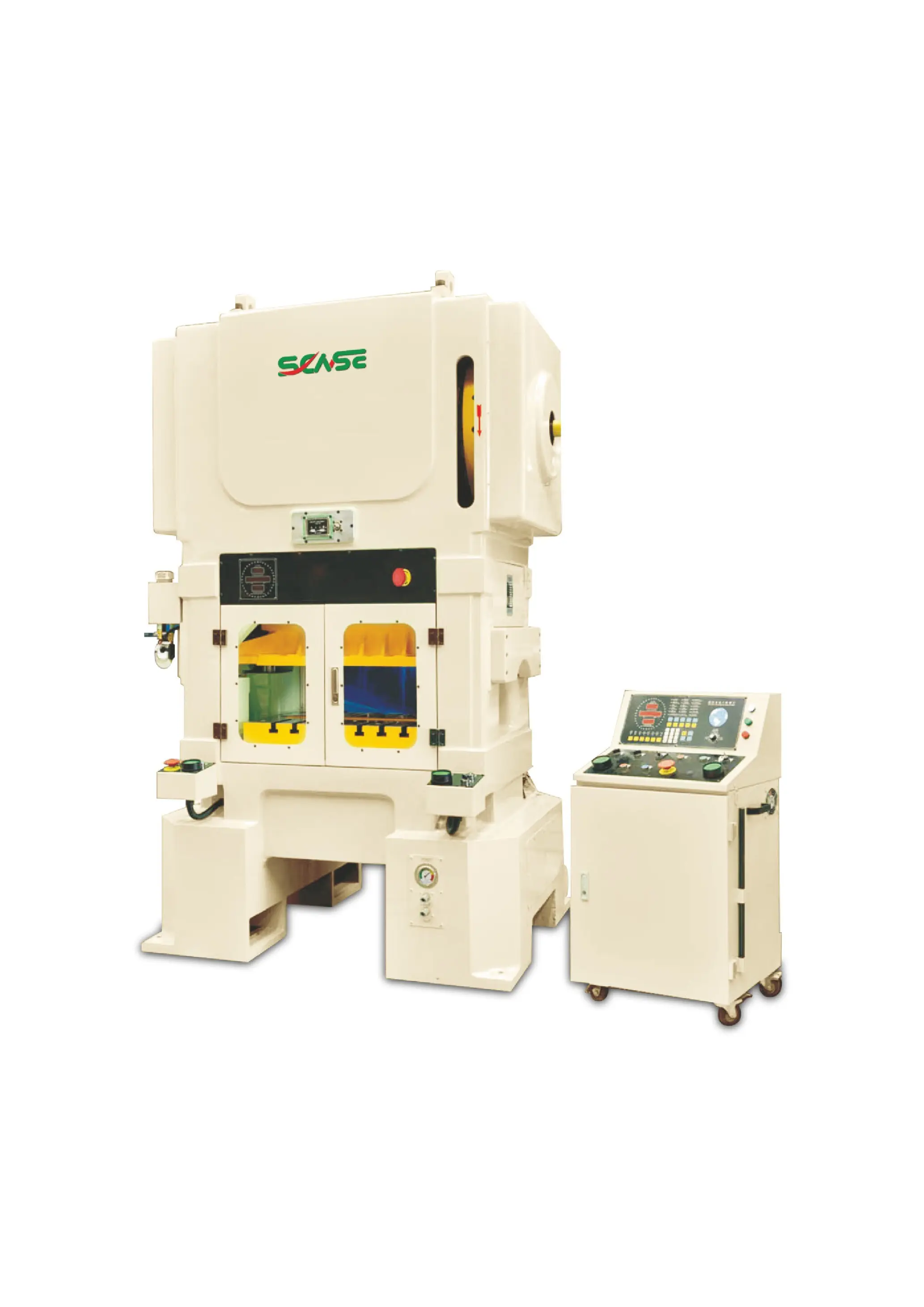Maintenance and Longevity of High Speed Punch Presses
In the fast-paced world of manufacturing, high-speed punch presses are like the workhorses of the production line. They may seem ordinary, but they are critical tools that demand meticulous care to ensure optimal performance and longevity. These machines are the backbone of precision production, but they require regular attention to maintain their efficiency and reliability. This guide will delve into the essential aspects of maintaining high-speed punch presses, providing a step-by-step approach to extending their service life and ensuring high-quality production.
Understanding the Latest Advancements in High-Speed Punch Presses
The evolution of high-speed punch presses has been marked by significant technological innovations aimed at enhancing performance, durability, and efficiency. Modern presses are equipped with advanced automation systems that streamline operations and reduce human error. Imagine a press that not only cuts with precision but also adjusts its speed and load distribution automatically. Precision engineering has led to the use of high-performance materials like hardened steel and specialized tooling, which contribute to longer service lives. Additionally, automation in areas like load distribution and speed regulation ensures consistent quality in every operation. These advancements not only boost productivity but also minimize downtime, making them essential for manufacturers seeking efficiency and reliability.

Example:
Consider a press shop that upgraded from basic to automated punch presses. Their productivity increased by 30%, and maintenance costs dropped by 25%.
The Art of Regular Maintenance for Longevity
Maintenance is the cornerstone of preserving the longevity of high-speed punch presses. Regular inspection is crucial to identify potential issues before they escalate. Components such as belts and chains must be monitored for wear and tear, while lubrication schedules should be tailored to the machine's usage to prevent seizing. Cleaning routines, including those for cutting tools and workpieces, are vital to maintain the cutting edge and prevent contamination. By implementing these practices, manufacturers can address issues early, ensuring minimal disruption to production. Identifying common problems, such as imbalance or electrical faults, and knowing how to resolve them can prevent costly repairs and extended downtime.
Key Practices:
- Inspection Schedule: Conduct a weekly visual inspection to catch wear and tear early.
- Lubrication Schedule: Develop a tailored lubrication schedule based on usage.
- Cleaning Routine: Regularly clean and maintain cutting tools and workpieces to prevent contamination and maintain sharp edges.
Example:
One plant found that regularly cleaning the press and maintaining lubrication saved them over $10,000 in unexpected repair costs annually.
Implementing Preventive Maintenance for Optimal Operation
Preventive maintenance is a proactive approach that significantly enhances machine longevity. Establishing a routine service schedule, including inspections and tool replacements, allows for timely intervention before components degrade. Utilizing state-of-the-art monitoring systems, such as machine learning algorithms, provides real-time insights into machine performance, enabling early alerts for potential issues. Training employees on best practices, such as avoiding overloading machines, ensures consistent adherence to safety protocols. By focusing on preventive measures, manufacturers not only save on repair costs but also maintain high productivity levels, ensuring a reliable production floor.
Example:
A company that implemented a preventive maintenance program saw a 40% reduction in downtime and a 20% increase in overall machine uptime.
Maximizing Longevity Through Proper Use and Repair
The longevity of a high-speed punch press is heavily influenced by how it is used and repaired. Proper load distribution and adherence to machine limits prevent excessive strain and wear. Monitoring machine performance through diagnostic tools helps in identifying inefficiencies and optimizing productivity. When it comes to repair, replacing worn-out parts with high-quality originals ensures functionality and prevents further deterioration. Regular maintenance not only prolongs service life but also minimizes unexpected breakdowns, providing a steady output for manufacturers.
Example:
A shop that focused on proper load distribution and regular maintenance saw a 25% reduction in energy consumption and a 30% increase in overall machine efficiency.
Ensuring Safety and Compliance in High-Speed Punch Press Operations
Safety cannot be overlooked in the operation of high-speed punch presses. Regular training programs equip operators with the necessary skills, while hazard assessments identify potential risks. Adherence to industry standards ensures compliance, reducing the likelihood of accidents. Safety measures include protective gear and emergency shutdown procedures, which are essential in a fast-paced environment. Choosing between in-house and external maintenance services involves balancing cost and reliability. Internal teams often provide cost-effective solutions that align with company values.
Example:
A company that invested in comprehensive safety training saw a 50% reduction in workplace accidents and a 25% decrease in insurance claims.
Troubleshooting Common Failures and Solutions
Common failures in high-speed punch presses include belt or chain wear, electrical issues, and operator errors. Troubleshooting these issues requires a systematic approach, starting with symptom analysis and progressing to detailed diagnostics. Case studies illustrate how addressing failures promptly can resolve issues and prevent further damage. Proper part replacement, whether it's a belt or a tool, is crucial for restoring machine efficiency. By understanding and implementing these solutions, manufacturers can maintain operational integrity and minimize downtime.
Troubleshooting Steps:
- Symptom Analysis: Identify signs of wear, such as unusual sounds or vibrations, and record them.
- Detailed Diagnostics: Use diagnostic tools to pinpoint the exact cause of the failure.
- Proper Part Replacement: Replace worn-out parts with high-quality originals to ensure functionality.
Example:
One shop was able to resolve a frequent belt failure by replacing it with a high-quality replacement part, saving significant downtime.
Conclusion
Maintaining high-speed punch presses is essential for ensuring reliability and productivity. Regular inspections, preventive maintenance, and proper use all contribute to extending their service life. By prioritizing safety, compliance, and continuous improvement, manufacturers can optimize performance and maintain a competitive edge. Through diligent care and proactive measures, these machines continue to be the backbone of precise and efficient production.
By focusing on these key areas, we ensure a comprehensive and engaging guide that helps manufacturers maintain their high-speed punch presses effectively.





